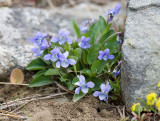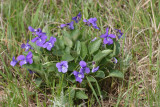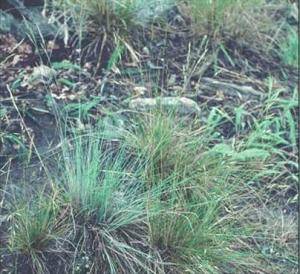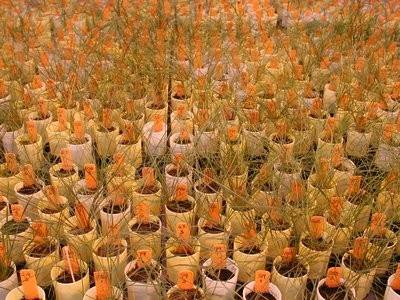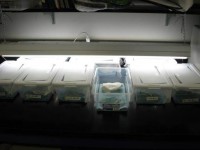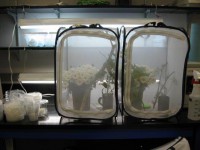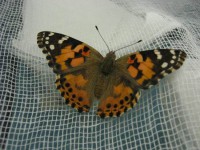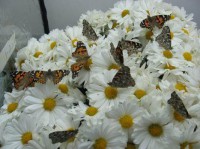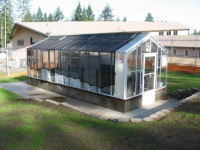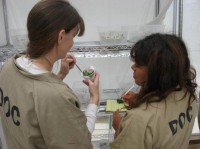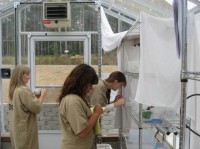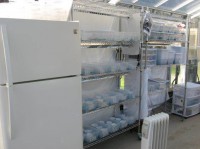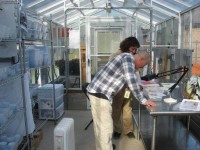This speech was presented by Roots of Success graduate Robert Mayo on July 22, 2015; shared here with his permission.
Good Afternoon.
My name is Robert Mayo and I’m here today because I completed Roots of Success.
I would like to take this moment to show the utmost respect and give gratitude towards all of those who were involved in Roots of Success.
First and foremost, I would like to thank Dr. Raquel Pinderhughes [Roots founder], Mr. Aleksinski [SCCC Roots Liaison and Classification Counselor] and the rest of the supporting cast up here today that made all of this possible. Next, I would like to thank Mr. Walrond, Mr. Mitchell, Mr. Duhaime and Mr. Powers for doing such an amazing job instructing us. And lastly, I would like to thank all of us here today who are receiving certificates, because today we all proved to ourselves that hard work, dedication and determination truly pays off!

Mr. Mayo gives a speech at the Roots of Success graduation. Photo by Joslyn Trivett.
Before Roots of Success I had the mind frame to put things off until tomorrow. I was a procrastinator and I hated to try anything new or anything I wasn’t good at. For example, PUBLIC SPEAKING! This has been one of my biggest fears throughout my entire life. Even as a kid, I can still recall the feelings I felt when having to speak in front of the class. My heartbeat would start to speed up. My hands would become all sweaty. My armpits would start to drip. And my mind would picture everyone in the classroom laughing at me. IT WAS HORRIBLE! I remember telling Mr. Walrond about this when I first started Roots of Success. He told me that by the end of this course not only will I be able to speak in front of any crowd, but I will be able to do it with confidence and conviction. That conversation was just a few short months ago and today I’m happy to be able to have Mr. Walrond’s prediction come to fruition.
You see, Roots of Success didn’t only teach me how to make my environment a better place for me to live in, but it also taught me how to become a better person within my environment. My favorite modules were “Community Organizing and Leadership” and “Financial Literacy and Social Entreprneurship.” These two modules really hit home for me. I never realized all the procedures being taken to make certain laws come into effect. I was unaware of people going to local town hall meetings to fight against the major corporations that are placing factories inside of their communities without their permission. Or the ongoing battle that’s been prevalent all across the U.S. between minorities and The Department of Justice on police brutality. Or the parents who protest constantly about the lack of education their children are receiving throughout their low income neighborhoods. If I choose to fight when I get out of here these are the types of fights that I want to be a part of. As a collective, we have the power to make a difference! We have the power to make our voices heard! We have the power to take action! So why don’t we?

Roots of Success students study together in a group during a regular class. Photo by Joslyn Trivett.
In the “Financial Literacy and Social Entrepreneurship” module, I learned how to fill out an application correctly. I learned what I should wear, how I should talk and what I should do when going in for an interview. I know now how to set short and long term goals, how to budget my finances and how to live comfortably within my means. I got something from each and every module, but these were the two modules that woke me up the most. I’m done living life in a daydream and I’m ready to fight for what it is that I want.
Roots of success was essential to my growth. It was the first building-block to the foundation of my future. The only negative thing that I can say about Roots of Success, is that it’s already over. I hope that eventually there will be an additional course offered to us here at Stafford Creek. If possible, I would like to be the first person to sign up and I can guarantee you that many others would be soon to follow.
Roots of Success is a Success!
Before I leave here today I would like to mention three things that I can now say about living green.
I KNOW IT!
I LOVE IT!
AND I BELIEVE IN IT!
Thank you for your time.

Recent Roots of Success graduates proudly display their graduation certificates. Photo by Joslyn Trivett.
For more information on the Roots of Success, please contact the program coordinator Emily Passarelli at passaree@evergreen.edu.






























 Gig Harbor, Wash.—Emphasizing the importance of sustainability, the horticulture program at
Gig Harbor, Wash.—Emphasizing the importance of sustainability, the horticulture program at  “Because each offender demonstrated a high capacity of responsibility for day-to-day farm activities, I decided to assign special projects for each lady,” Little said. “The project idea was a way for the offenders to take ownership of the farm, learn something new and educate each other on their respective projects. Being a part of the learning process was an enriching experience as a manager, and I look forward to working with Washington Corrections Center for Women to explore new boundaries, build knowledge and experiences and work together to fight hunger.”
“Because each offender demonstrated a high capacity of responsibility for day-to-day farm activities, I decided to assign special projects for each lady,” Little said. “The project idea was a way for the offenders to take ownership of the farm, learn something new and educate each other on their respective projects. Being a part of the learning process was an enriching experience as a manager, and I look forward to working with Washington Corrections Center for Women to explore new boundaries, build knowledge and experiences and work together to fight hunger.”